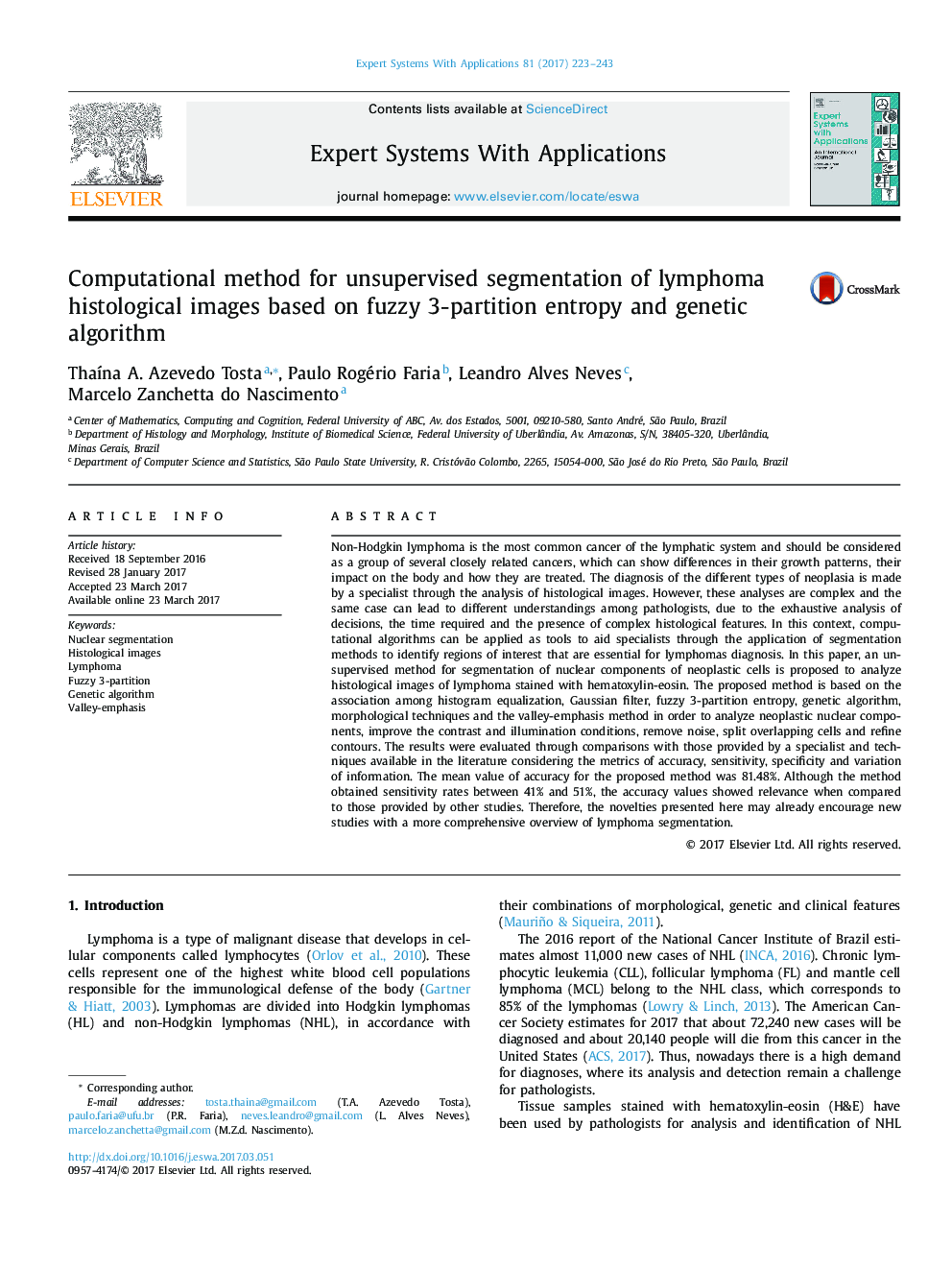| Article ID | Journal | Published Year | Pages | File Type |
|---|---|---|---|---|
| 4943357 | Expert Systems with Applications | 2017 | 21 Pages |
Abstract
Non-Hodgkin lymphoma is the most common cancer of the lymphatic system and should be considered as a group of several closely related cancers, which can show differences in their growth patterns, their impact on the body and how they are treated. The diagnosis of the different types of neoplasia is made by a specialist through the analysis of histological images. However, these analyses are complex and the same case can lead to different understandings among pathologists, due to the exhaustive analysis of decisions, the time required and the presence of complex histological features. In this context, computational algorithms can be applied as tools to aid specialists through the application of segmentation methods to identify regions of interest that are essential for lymphomas diagnosis. In this paper, an unsupervised method for segmentation of nuclear components of neoplastic cells is proposed to analyze histological images of lymphoma stained with hematoxylin-eosin. The proposed method is based on the association among histogram equalization, Gaussian filter, fuzzy 3-partition entropy, genetic algorithm, morphological techniques and the valley-emphasis method in order to analyze neoplastic nuclear components, improve the contrast and illumination conditions, remove noise, split overlapping cells and refine contours. The results were evaluated through comparisons with those provided by a specialist and techniques available in the literature considering the metrics of accuracy, sensitivity, specificity and variation of information. The mean value of accuracy for the proposed method was 81.48%. Although the method obtained sensitivity rates between 41% and 51%, the accuracy values showed relevance when compared to those provided by other studies. Therefore, the novelties presented here may already encourage new studies with a more comprehensive overview of lymphoma segmentation.
Related Topics
Physical Sciences and Engineering
Computer Science
Artificial Intelligence
Authors
ThaÃna A. Azevedo Tosta, Paulo Rogério Faria, Leandro Alves Neves, Marcelo Zanchetta do Nascimento,
